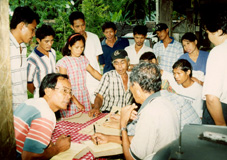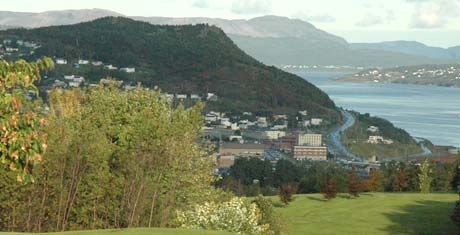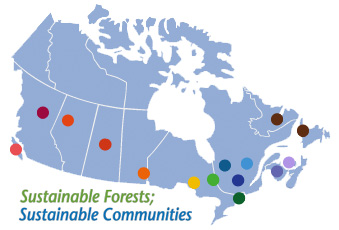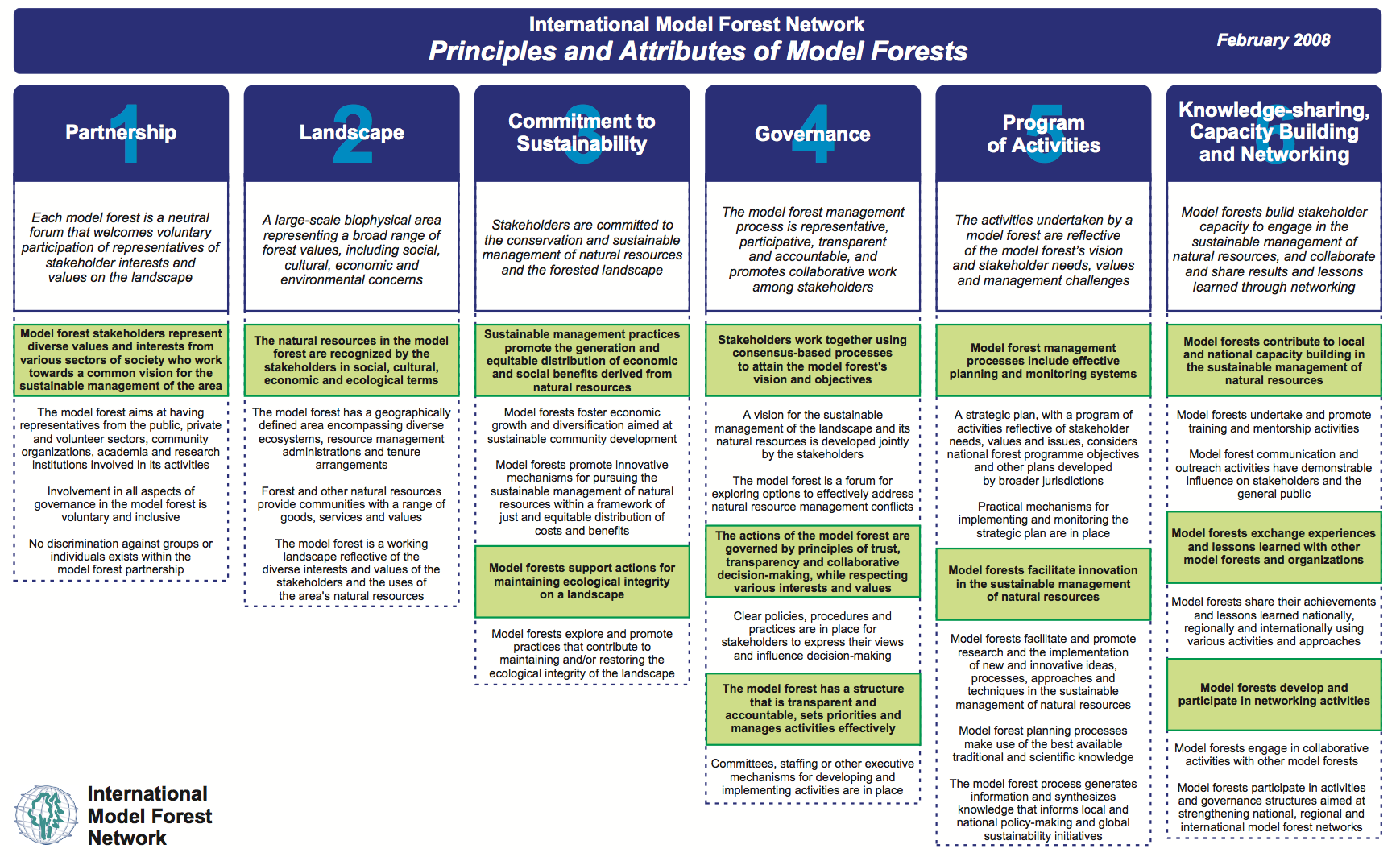What is a Model Forest?
Source: International Model Forest Network Model Forests are based on an approach that combines the social, cultural and economic needs of local communities with the long-term sustainability of large landscapes in which forests are an important feature. By design they are voluntary, broad-based initiatives linking forestry, research, agriculture, mining, recreation, and other values and interests within a given landscape.
Model Forests are based on an approach that combines the social, cultural and economic needs of local communities with the long-term sustainability of large landscapes in which forests are an important feature. By design they are voluntary, broad-based initiatives linking forestry, research, agriculture, mining, recreation, and other values and interests within a given landscape.
Model Forests are as much about the people who sustain themselves from the forest as they are about trees and forest products—they’re a fully working landscape of forests, farms, protected areas, rivers and towns.
In a Model Forest a variety of people with differing interests and perspectives form a neutral partnership based on the following goal: to manage their own natural resources in a way that makes the most sense to them given their history, economic and cultural identities and in a way that does not jeopardize future generations.
The partnership defines what sustainability means in their own context, develops a common goal, governance structure and strategic plan, then works collaboratively to achieve the goals set out in that plan.
These goals typically strive to harmonize economic and non-economic priorities and to focus, for example, on education, research, or developing local level indicators (LLI) to monitor progress toward sustainability within the Model Forest area. In addition, Model Forest partnerships are very effective in identifying economic opportunities that are not based on timber alone. In that light, a Model Forest is best thought of as a long-term process rather than a project.
Model Forests are unique in several ways: the comprehensiveness of their approach, the scale of operation, the breadth of their partnerships, the level of policy they aim to effect and the importance placed on networking.
Geographically, the Model Forest must represent wide variety of uses and values at play within a particular landscape, such as a watershed.
Principles and Attributes
Because the conditions under which the sustainable management of forest landscapes can vary from one site or region to another, the Model Forest concept was designed to be flexible. Model Forests set their own priorities relating to conservation of biodiversity, cross-cultural awareness, economic diversification, public education, and agricultural improvements, as examples.
But if no two sites are identical, how does the Network function? What binds these diverse sites together? Model Forests are linked through a common philosophy that forms the basis for networking and knowledge sharing: the Model Forest Principles and Attributes (PA) Framework. The PA Framework provides a baseline as to what constitutes a Model Forest and sets out supporting attributes. Model Forest representatives at the 2005 IMFN Global Forum in Turrialba, Costa Rica, requested such a tool to help ensure the Network’s integrity. At the 2008 Global Forum in Hinton, Canada, they voiced their support for the resulting framework.
Framework Graphic
During the Global Forum 2008 IMFN members unanimously accepted to adopt a Model Forest Principles and Attributes (P&A) Framework that includes guiding principles to model forest development and operation. Although no two model forests are identical, these guiding principles and attributes provide a common thread for uniting the various sites across the Network.
The framework includes the following six principles: a broad-based partnership, a large landscape, a commitment to sustainability, good governance, a broad program of activities reflective of stakeholder values, and a commitment to knowledge sharing, capacity building and networking.



